By Louise Irvine
Last year, in the Recent Revelation newsletter article, we revealed the origin of our Doulton terracotta panel of St. Paul, the apostle, which was modeled by George Tinworth for St. Mary’s Church in Lambeth, London. The discovery sparked some fascinating correspondence, and we have now located his companion, St. Peter, thanks to Conrad Biernacki and Brian Musselwhite in Canada. They acquired the panel at Ritchies Auctioneers in Toronto in 1991, and it has been in their living room ever since.
Conrad reports that they were shocked to see St. Peter in the auction house laid out like a funerary statue on a pine harvest table. A crowd was gathered around him, but it turned out that the auction bidders were more interested in the table, so Conrad and Brian acquired the Tinworth panel at a modest price. As long-time collectors and ceramic experts, Conrad and Brian did some digging into the history of the panels and learned that four of the panels from the reredos at St. Mary’s Lambeth were sold together at Sotheby’s auction house in 1973. The panels of St. Peter, St. Paul, Moses and Elijah were purchased by Richard Dennis, a specialist dealer in Royal Doulton wares, and sold individually to collectors. It is believed the panel of Moses went to Australia at that time.
Mrs. Tinworth’s diary from 1888 notes that George visited St. Mary’s Church on February 13, 1888, with Canon Frances Pelham and decided to sculpt a crucifixion scene with the apostles on either side. He started work on the panels on April 4, and they were installed by October 11. Tinworth was renowned during the Victorian era for his “Sermons in Terracotta.” His devout mother taught him to read the Bible, and fellow artists recalled that on Doulton staff outings, he would sit alone reading the scriptures. His chosen texts are enacted by biblical characters, vigorously modeled in clay relief. The passion and piety of this profoundly religious man can be experienced in his work as he strives to communicate words from the Bible through his art.
Tinworth portrayed St. Peter, the chief apostle, holding a sheep as Jesus instructed him to continue his shepherding ministry, “Feed my lambs, tend my sheep.” The keys to the kingdom of heaven are hanging from his belt, and the rooster at his feet symbolizes his threefold denial of Jesus. The panel of St. Peter has a crack, no doubt caused by the bombing of St. Mary’s Church during the Second World War. Tinworth’s altarpiece was dismantled after the war, and only the central crucifixion panel remains at St. Mary’s, which was deconsecrated in 1972 and is now the Garden History Museum in London.
Coincidentally, we also heard from Catherine Ralph in Stoke-on-Trent last month, pointing out the similarities between the crucifixion scene at St. Mary’s and the Tinworth reredos in St. Mark’s Church in Shelton. Catherine is the project manager for Under One Roof, the community heritage and conservation project for this important church, which is lovingly known as the Potter’s Cathedral. The crucifixion at St. Mark’s is 10 feet tall and was modeled by Tinworth in 1896. It was unveiled to celebrate Queen Victoria’s Diamond Jubilee the following year. In 1902, possibly to mark King Edward’s coronation, two flanking panels depicting the Wise Men and the Shepherds were added. Fortunately, the reredos at St. Marks is in excellent condition and is surrounded by stunning stained glass and encaustic floor tiles by Minton and Hollins.
See a selection of George Tinworth’s work at WMODA when the museum reopens.
Read more about Tinworth’s work at WMODA
Learn more about the Under One Roof Project at St. Mark’s Shelton
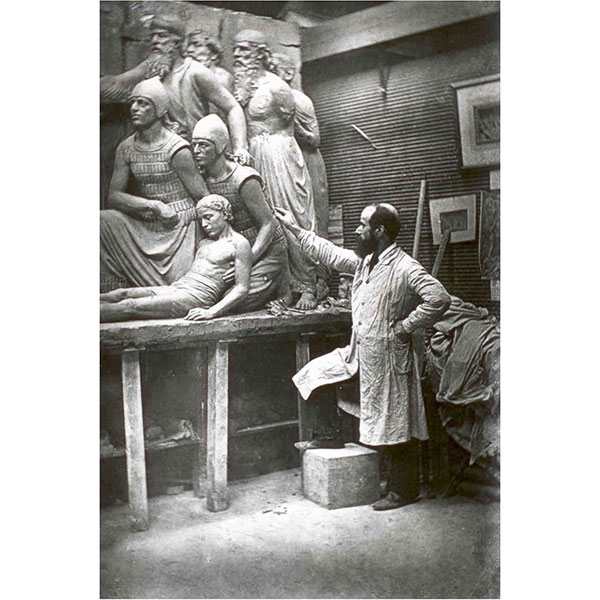
George Tinworth at work
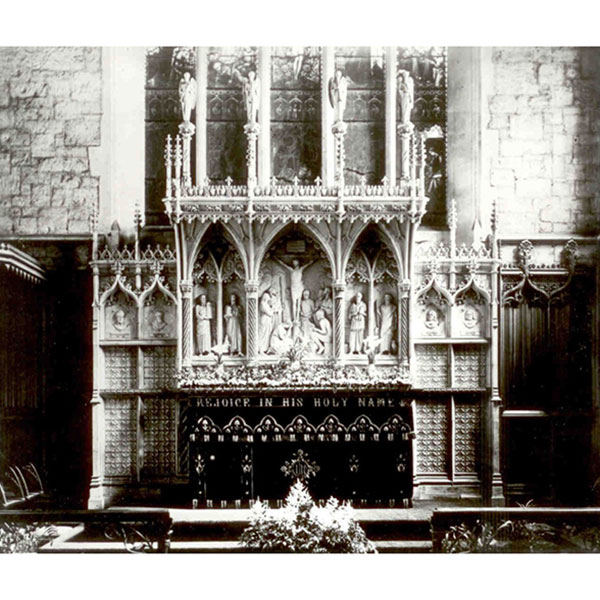
Tinworth Reredos at St Mary's Parish Church Lambeth commemorating Sir Henry Doulton's wife and father
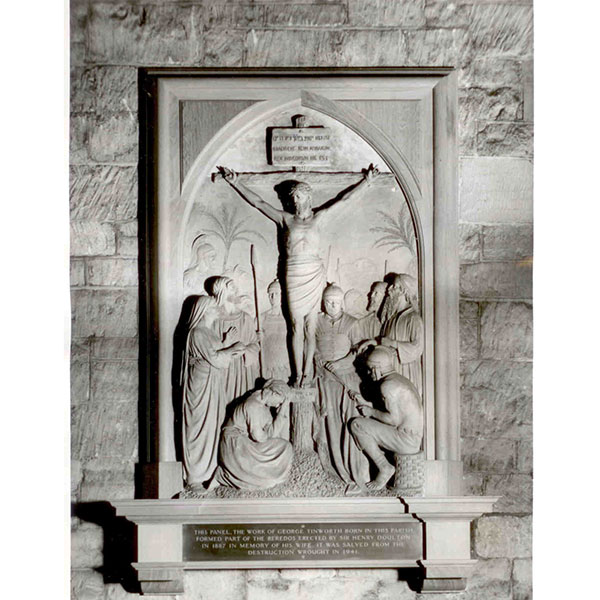
Tinworth's Crucifixion at St. Mary Church Lambeth in the 1950s
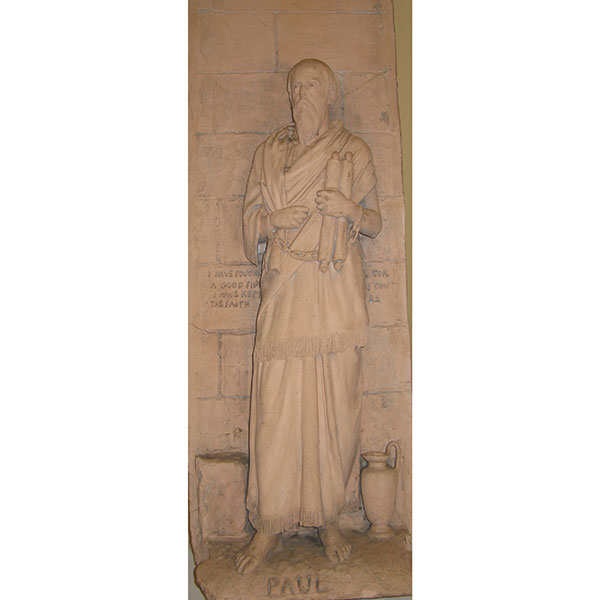
St. Paul from St. Mary’s Church G. Tinworth
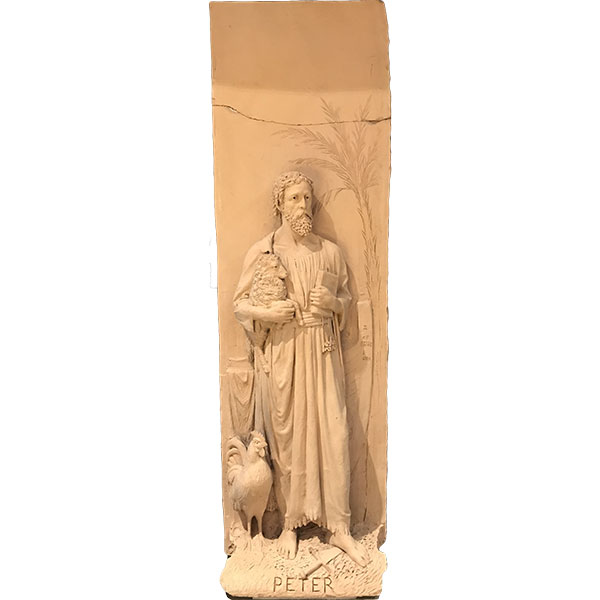
St. Peter from St. Mary’s Church G. Tinworth
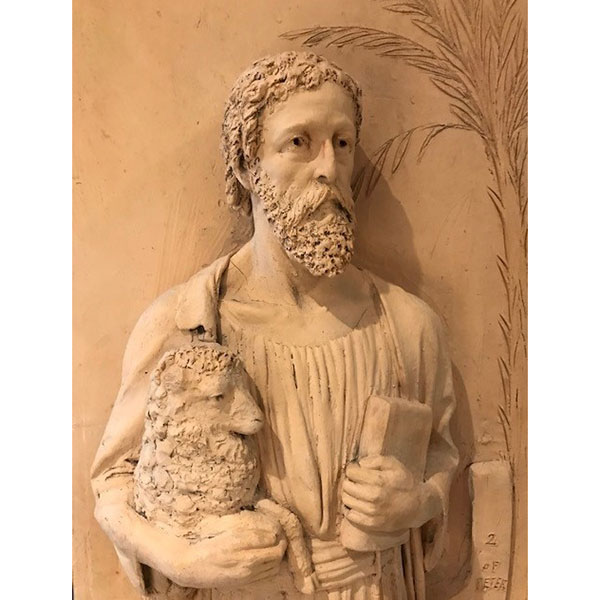
Detail of St. Peter G. Tinworth
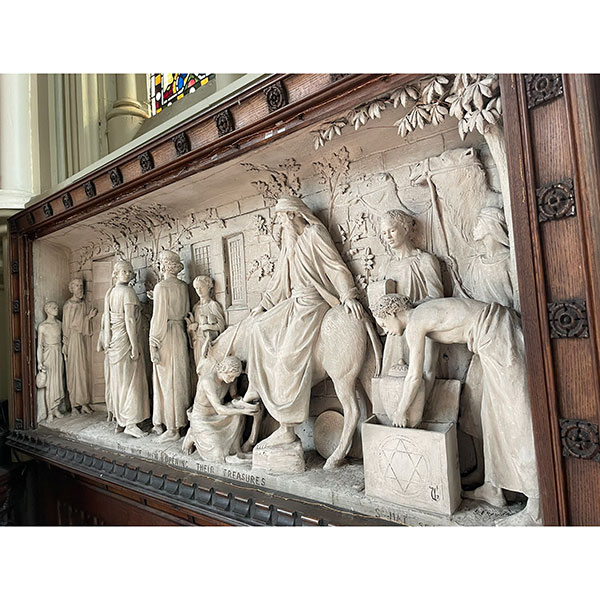
Wise Men panel St. Mark's Church G. Tinworth
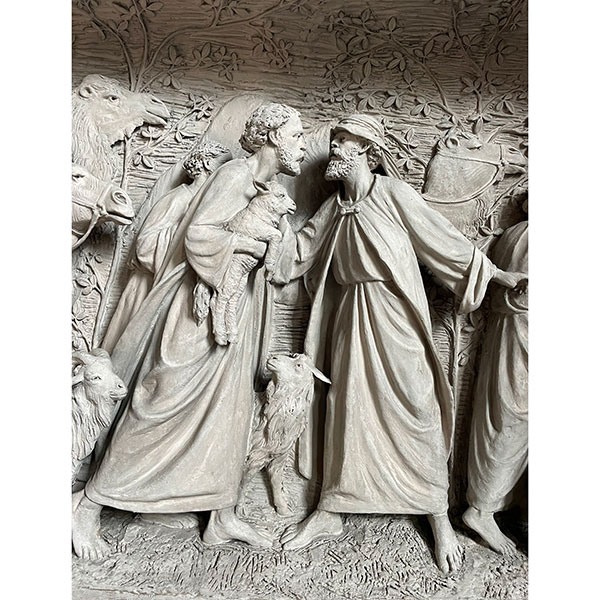
Detail of Shepherd's Panel St. Mark's Church
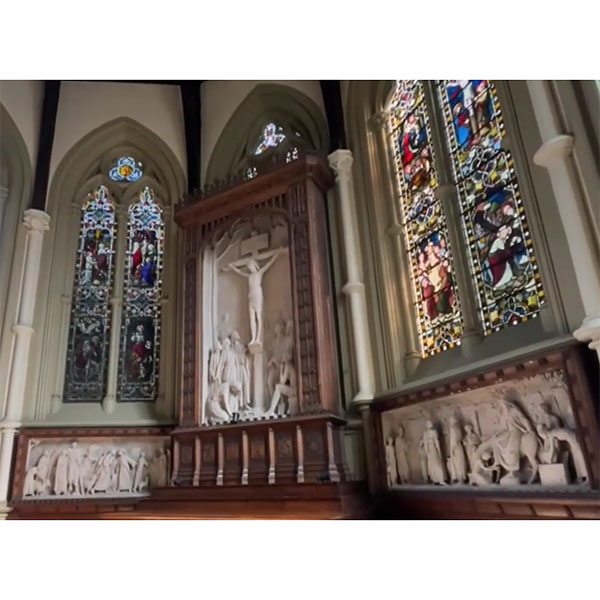
St Mark's Church Reredos Shelton
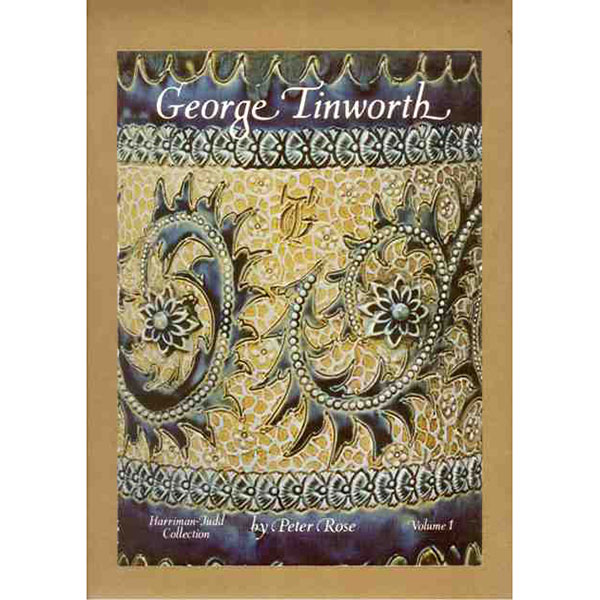
George Tinworth Reference Book
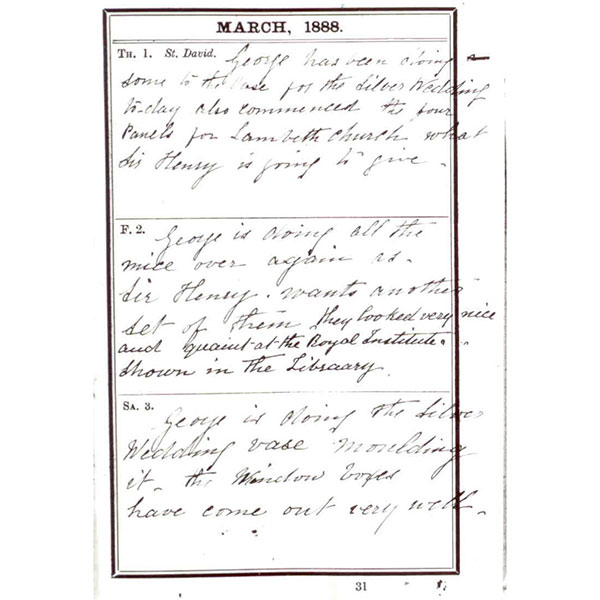
Mrs. Tinworth's Diary Page March 1888
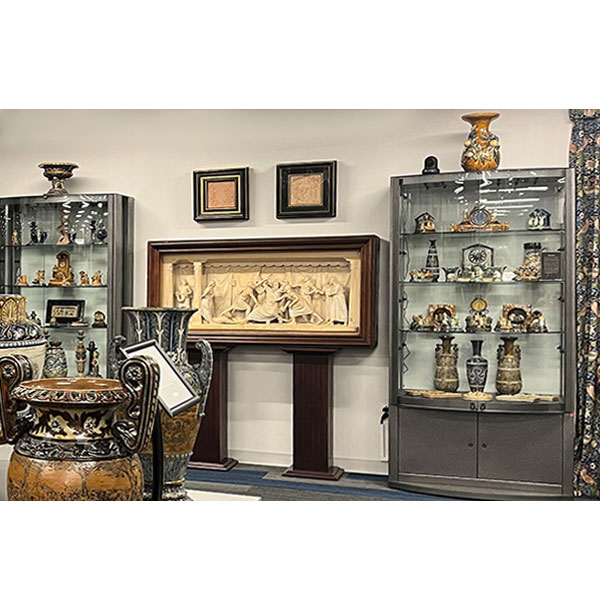
Tinworth Display Victorian Gallery WMODA
